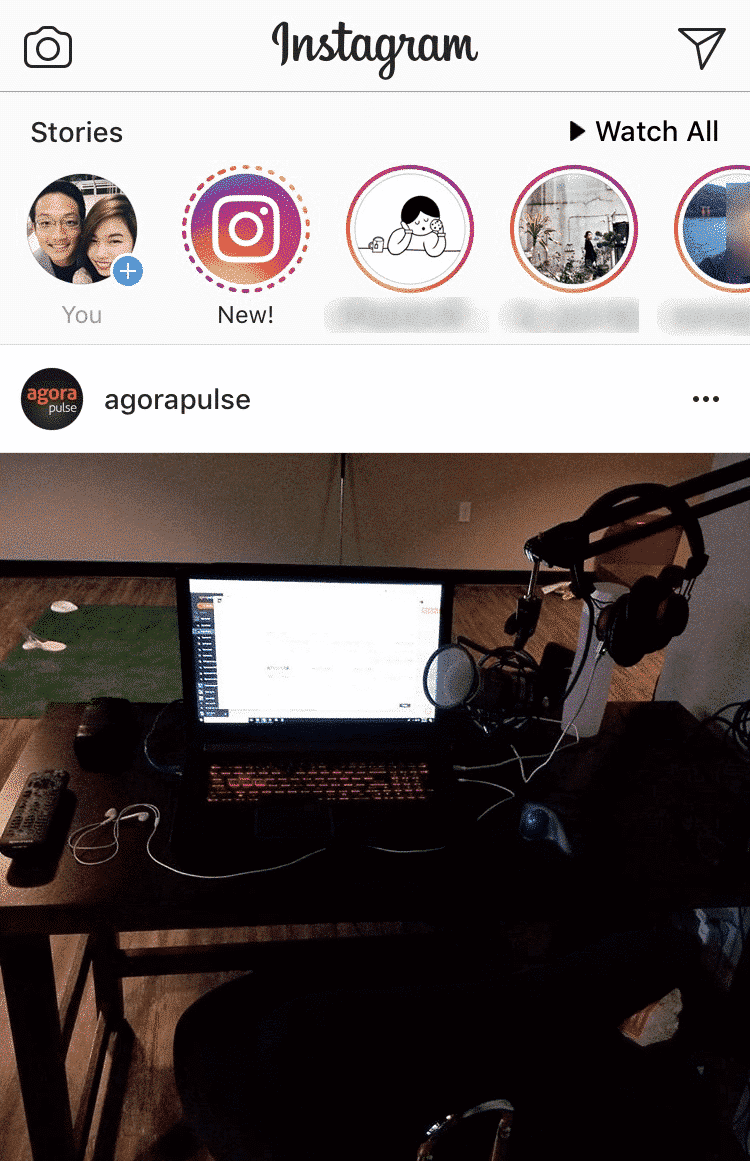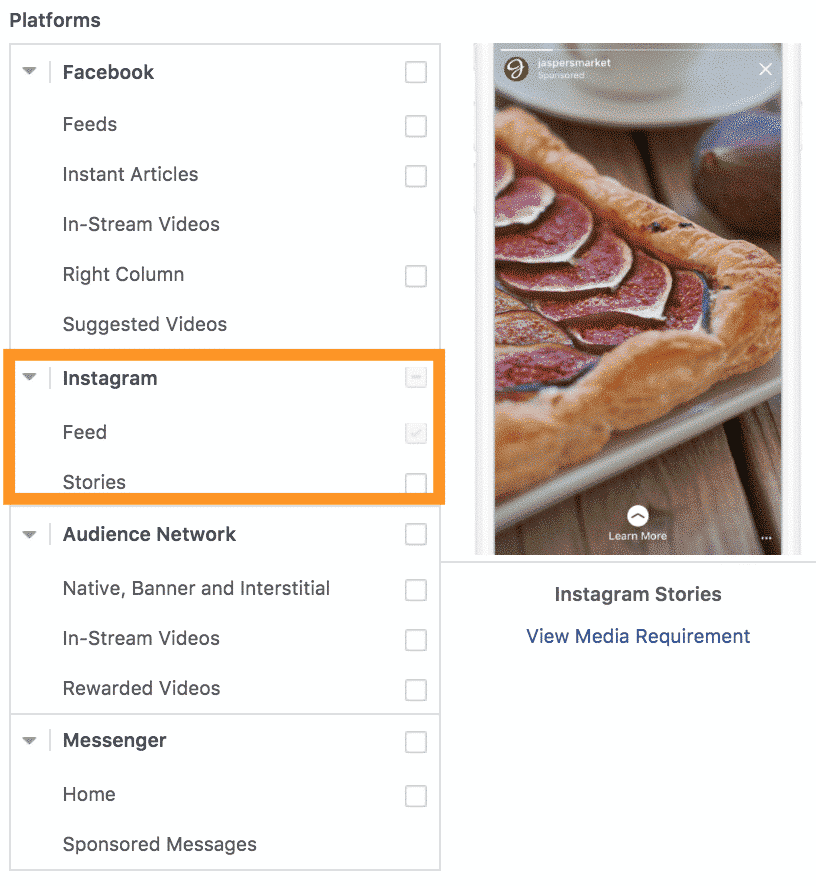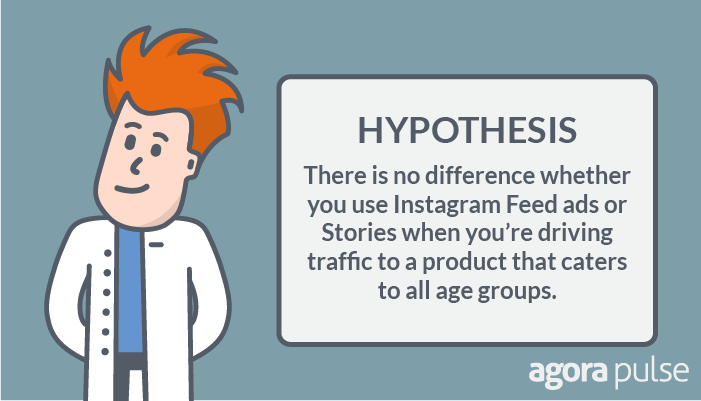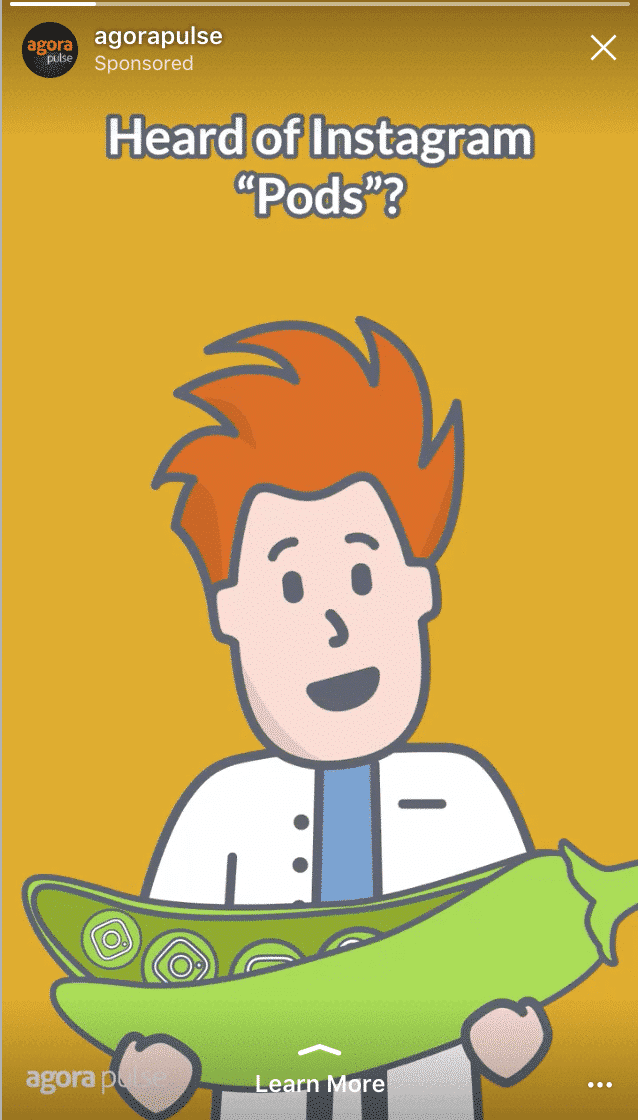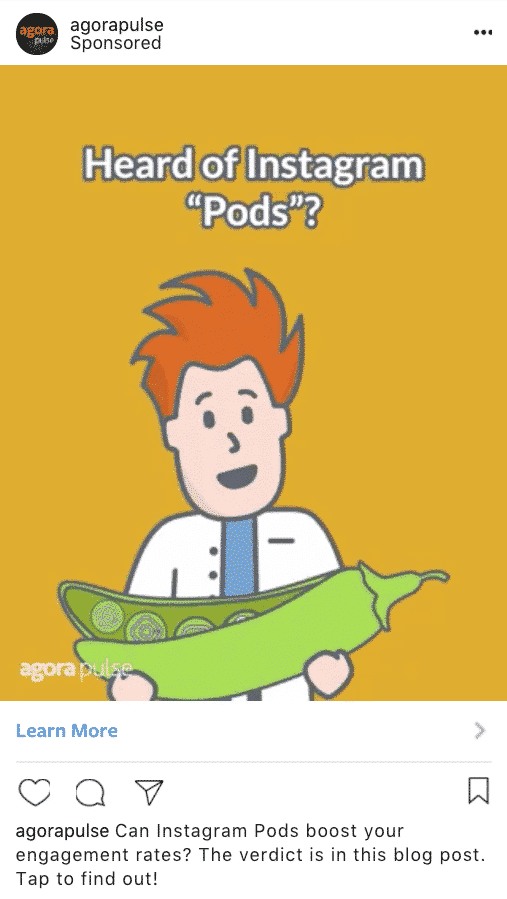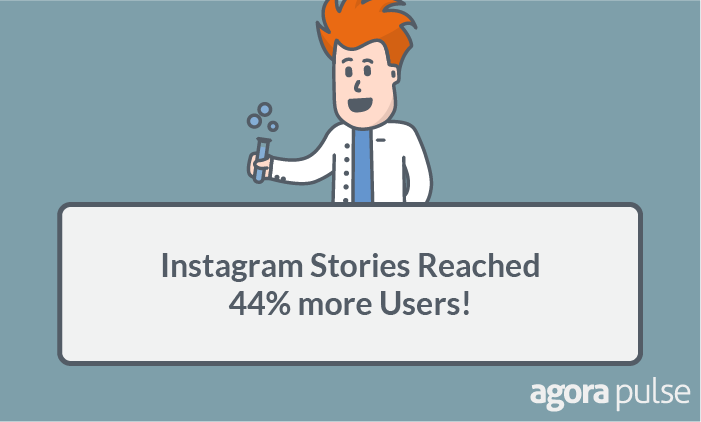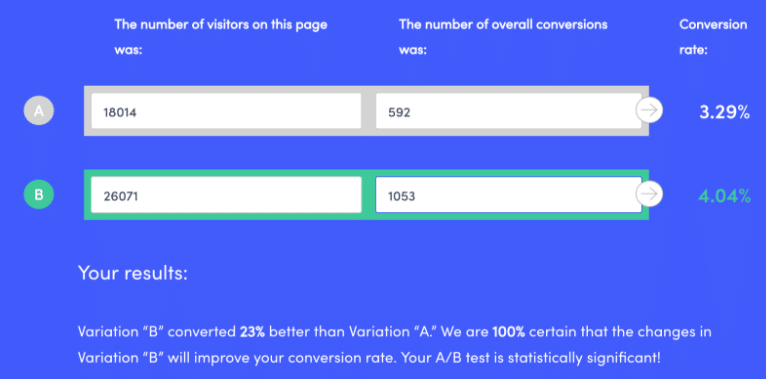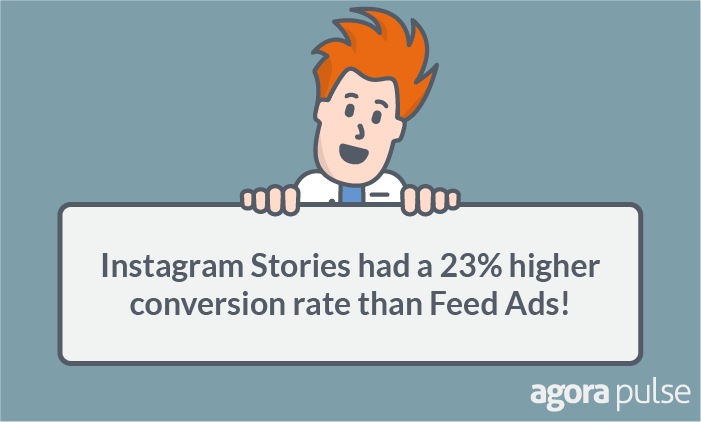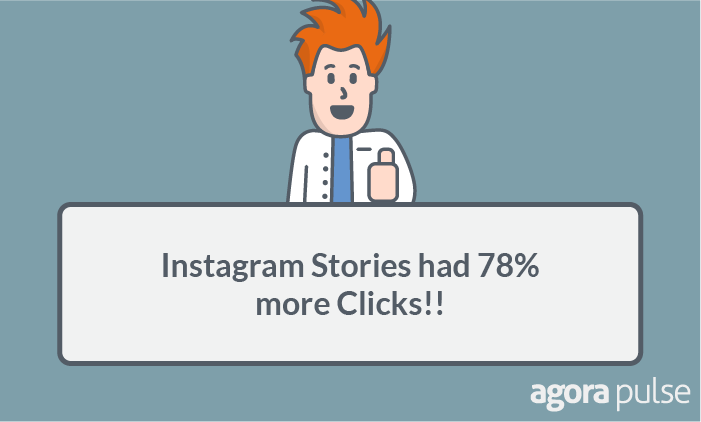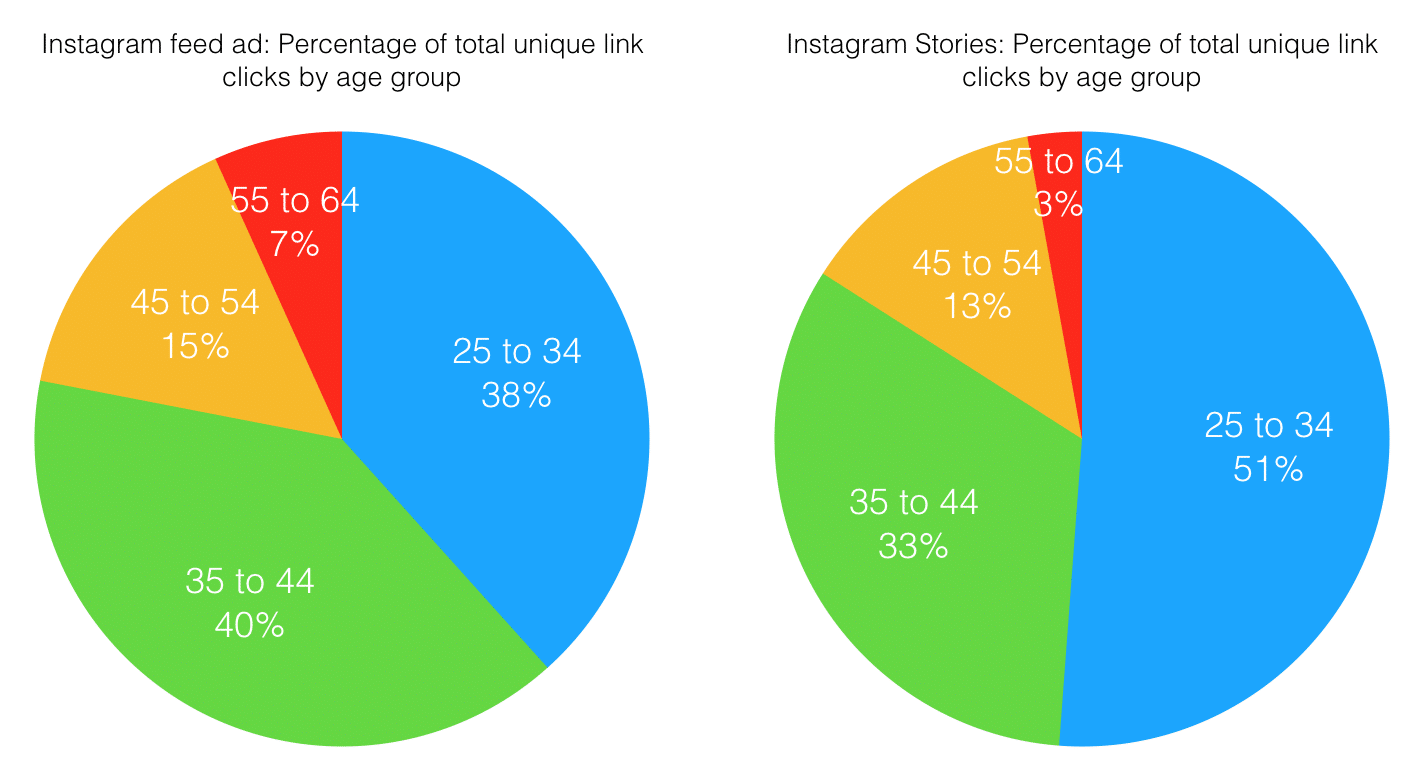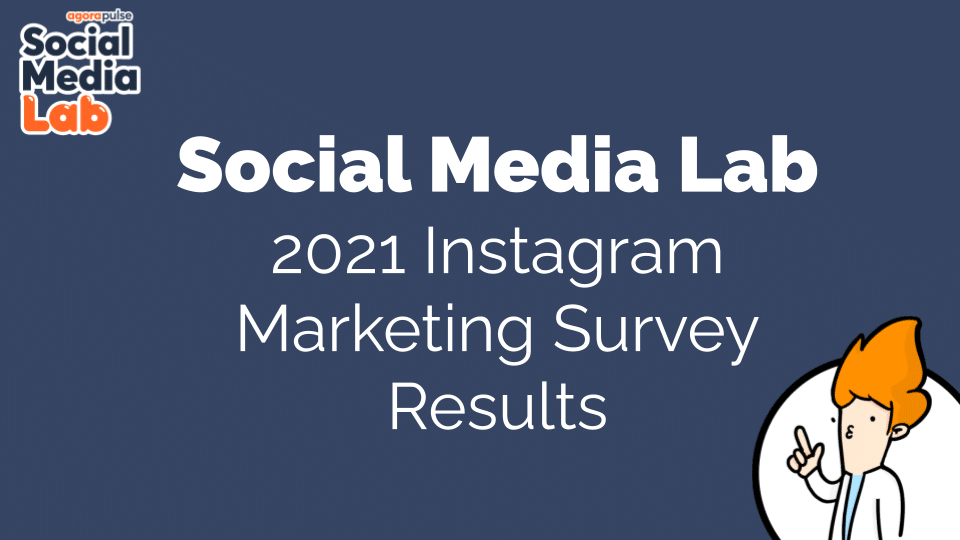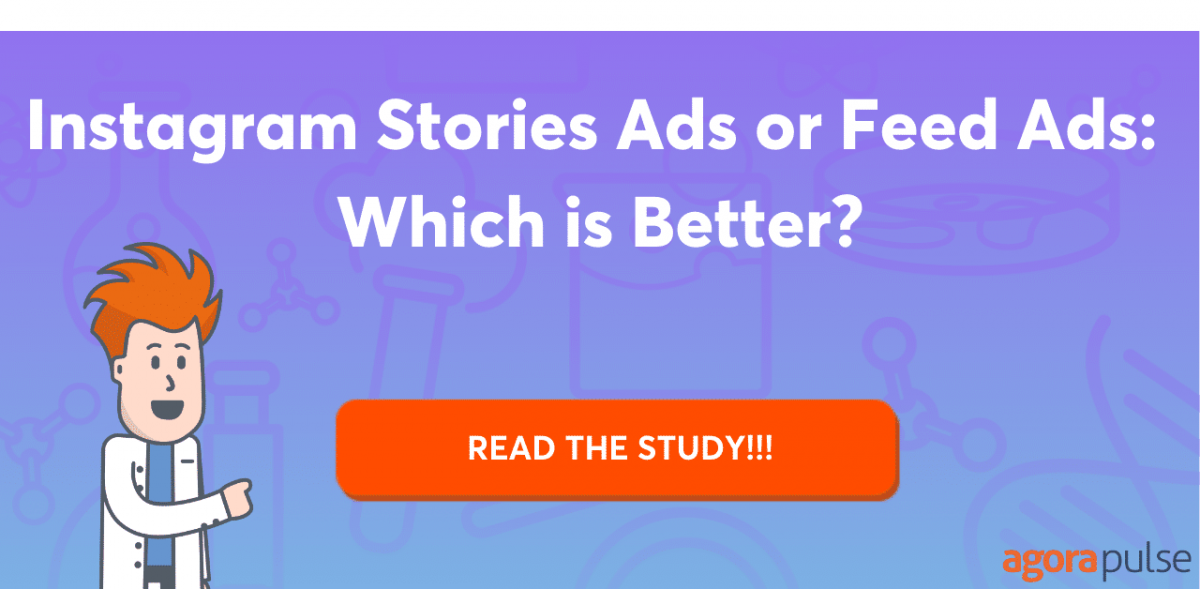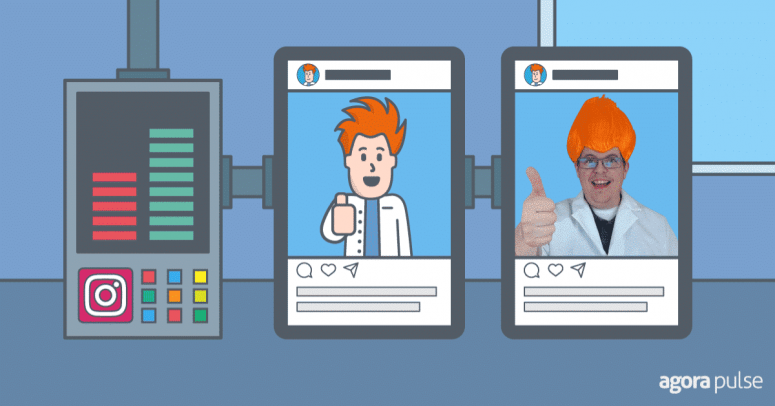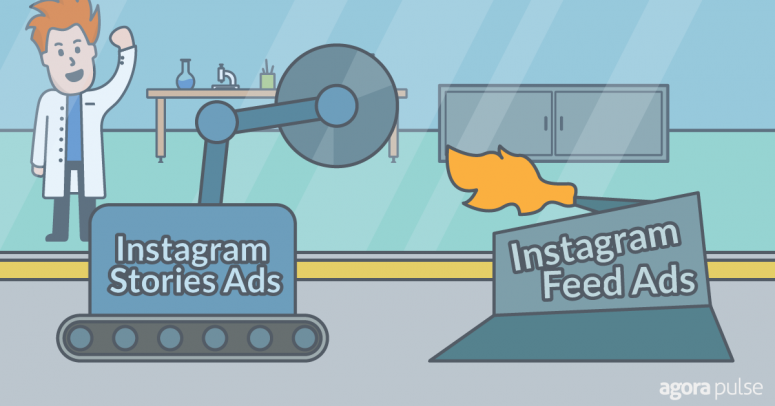
Subscribe to the Social Media Lab Podcast via iTunes | Stitcher | Spotify | Google Play | RSS
Instagram Stories vs Feed ads. Which is more effective at driving traffic to your site?
If you had to pick between Instagram Stories or an Instagram feed ad which would you pick?
If I were you, I’d definitely pick Instagram Stories!
After all, I’m a millennial and Stories are my social bread and butter. Some days my eyes are glued to Instagram and I tap those beautiful circles almost like a cocaine addiction!
But not everyone’s the same as I am.
Fact is, there are far more non-millennials than millennials using Instagram. According to Statistica, 54% of Instagram users in 2016 were over 35! The gap is probably even wider now in 2018.
So I guess when it comes to deciding between Instagram feed ads or Stories, it depends on who you’re targeting. If more of your customers tend to be older, perhaps you would pick Instagram feed ad over Stories.
But what if you have a podcast and blog like us at Agorapulse Social Media Lab where we’re targeting people from nearly all age groups?
That’s what we’re going to test today at the Lab.
Advertising On Instagram is Incredibly Easy
Advertising on Instagram is as simple as just checking the placements when creating your usual Facebook ad campaigns. Given the simplicity, it’s not surprising that there are already over 2 million advertisers on Instagram in less than 2 years.
When you’re creating Instagram ads, you can only choose between Instagram feed and Stories, but not both. That’s because the ad specifications for both Feed ads and Stories are different, so you can’t run the same exact ad on both placements.
Instagram feed ads aren’t new. They resemble the typical Facebook feed ad apart from a few cosmetic differences like a call-to-action button that stretches across the screen and fewer lines of text shown below the visual creative.
On the other hand, Stories give a different kind of immersive experience to Instagram users. It resembles the snaps that millennials are already very used to seeing on Snapchat before Stories even existed on Instagram.
(Don’t ask me why I was targeted by a gaming ad!)
In case you haven’t heard, Facebook announced during the last earnings call that Instagram will be rolling out Carousel format for Stories.
Advertisers will be able to create 3 frames (and more in the future) in their sponsored Stories instead of having to squeeze all of their content into one image or video. This will cater to users who either dislike data-heavy videos or who prefer to see more within the native interface before swiping up and visiting your website.
(By the time you’re reading this, we’re probably experimenting with the Carousel format, so make sure you hit the subscribe button today before leaving!)
Hypothesis
Now that you know what Instagram Feed ads and Stories look like, it’s time to dive into our experiment!
Here’s our hypothesis: There is no difference whether you use Instagram Feed ads or Stories when you’re driving traffic to a product that caters to all age groups.
Are we right or wrong? Let’s find out!
The Experiment Design
Starting with our primary metrics for success
Every successful experiment starts with the end in mind.
For us, we wanted to find a way to drive sustainable traffic to our Social Media Lab blog and podcast.
Unfortunately, there is no way of tracking podcast subscriptions or downloads directly from Facebook at the moment. In fact, Apple only recently started to release an analytics platform for producers. It’s a little backward, but something we have to work with for now.
Hence, our primary metric for success are the unique link clickthrough rates (uCTRs) and cost per unique link click (CPuC).
If one of the Instagram ad formats can deliver a significantly higher clickthrough rate at lower cost, then we could consider using it to promote every blog post and podcast episode.
With this in mind, let’s take a look at how we set up our experiment.
The Facebook campaign structure
Since we’re only interested to find out if Instagram Feed ads and Stories will produce significantly different results, we created only one campaign.
We used the Traffic objective because we couldn’t place a pixel on our podcast page, which made it impossible to use the Conversions objective.
We also used a standard naming convention. This is a practice we emphasize a lot because when you want to analyze data, especially big pools of data, naming conventions will save you a lot of trouble.
Here’s a quick explanation of the naming convention we used:
- SMLabs refers to experiments that we are running in Social Media Lab.
- Test 30 means that this is the 30th paid test that we’re running!
- EN means that we are targeting visitors of our English website. In case you don’t know, our website is available in Portuguese, Spanish, and French too.
- IG Stories vs IG Post Ad is the name of the test, which makes it easy for our colleagues to understand what the test is about without having to click on it.
- Mobile means the placement which we’re running the ads on.
- Traffic refers to the ad objective that we’re using.
- For simplicity, we use “-” as a separator.
Next, we created two nearly identical ad sets (which ran on different placements for obvious reasons):
- Budget: We spent $20/day and ran it until we achieved statistically significant result (our favorite rule).
- Targeting: We targeted a 1% lookalike audience of Agorapulse users and excluded those who had visited our website in the last 30 days or used our app. We also narrowed the age range to 28 to 64, since younger and older people have a smaller tendency to be our customers.
- Optimization: We pondered between optimizing for “Link Clicks” and “Landing Page Views”. In the end, we opted for “Landing Page Views” because it was a more accurate and stringent metric for the number of visits that saw our site. Plus, we also used “Landing Page Views” as a backup metric to check on the quality of our link clicks.
- Bid strategy: We kept this simple and went with the lowest cost bidding option.
Ads
Finally, let’s take a look at our ads! I’ve also included a preview link to the ads below.
Both linked to an experiment we ran on the Lab about Instagram Pods.
Here’s what the Instagram Story looks like:
And here’s a peek at the Instagram feed ad:
Although Instagram Stories and feed ads have different ad specifications, we made some necessary adjustments to minimize the difference. We maximized the dimensions of the video ad on Instagram feed to mimic the immersive nature of Instagram Stories, that’s why they seem similar from the previews above.
What Does the Data Say about Instagram Stories vs Feed Ads?
It’s time for the big reveal! Let’s start with the overall results.
We spent a total of $624.52 and generated 1,645 unique link clicks at a CPuC of $0.38.
The results also showed a total of 1,607 Landing Page Views, which was only 2.3% lower than the total number of unique link clicks. This gave us confidence that the traffic generated was legitimate.
Next: the showdown.
The Instagram feed ad spent $314 and reached 18,014 people. Out of the 18,014 people reached, it generated a total of 592 unique link clicks at a CPuC of $0.53.
On the other hand, the Instagram Stories spent $310.52 and reached 26,701 people. Out of the 26,701 people, it generated an impressive number of 1,039 unique link clicks at a CPuC of $0.29.
But was the difference in traffic statistically significant?
Yes, it is!
Our hypothesis was that there wouldn’t be a difference in the results between Instagram feed ad and Stories. Based on these results however, I am confident to say otherwise.
Instagram Stories are better at driving cost effective traffic than Instagram feed ads.
That’s not all.
When we looked at the quality metric “Landing Page Views”, we saw that the Instagram feed ad recorded 4% fewer views than unique link clicks. On the other hand, Instagram Stories only recorded 1% fewer views than unique link clicks.
Basically, fewer people who clicked on the Instagram Stories bounced from the website than those who clicked on the Instagram feed ad. This may be a premature conclusion but it hints that the traffic from Instagram Stories were not only more than the feed ad, but also of a higher quality.
What Else Did We Learn from this Experiment?
-
It’s more expensive to advertise on Instagram feed ads than Stories
You may be wondering why the feed ad reached fewer people than the Stories despite spending a similar amount of money. That was because of relatively higher Cost Per 1,000 Impressions (CPM) charged by Facebook for feed ads.
The feed ad had a CPM of $14.65, which was 69% higher than the CPM of $8.68 for Stories.
Couple that with the results we just found earlier, Stories are clearly underused by advertisers currently!
That said, this may not be the case anymore in the near future. On the latest earnings call, Facebook said that ads on Stories is a quickly growing part of its revenue, which means marketers are quickly warming up to the format. So my advice is for you to jump onto this bandwagon sooner than later.
-
Our assumption about the age groups were wrong
Earlier I mentioned that we thought Stories were more popular among younger age groups and older age groups were more likely to react to feed ads than Stories.
But the difference was less obvious than we thought.
The biggest difference was seen in the age groups 35 to 44 and 55 to 64. Those in the age group between 45 to 54 was surprisingly close in terms of how they reacted to Instagram Stories.
Based on these numbers, I am not confident to say that older age groups are more receptive to feed ads. So I would urge you to try both ad formats to see what works for you.
-
Podcast content is a long term value play
28 days after we ended the experiment, we found that only 6 of the 3,576 unique link clicks subscribed to our email lists or tried one of our tools and 3 signed up for a free trial of Agorapulse.
This translates to either $201.35 per lead or $402.70 per free trial user (gasp!)
Although this campaign was not intended to generate leads or free trials and we weren’t able to track the number of people who subscribed to our podcasts, it is pretty clear that this approach is not a cost effective way to find more users for our app.
This reinforces our intention with the Social Media Lab. After all, our goal is to invest over $15k per month to help “Crack the Code” of social media and then report those results to you so you don’t have to do the dirty work!
It’s our long-term strategy to upkeep the quality of social media content and build a valuable resource for all marketers.
If you like what you see so far, please don’t forget to subscribe to our podcast and share it with your colleagues!
Our Closing Thoughts on Instagram Feed Ads and Stories
It’s quite clear that ads on Instagram Stories are way more cost effective at driving traffic to our site than Instagram feed ads. Our data supports it and even hints that traffic from Stories is of a higher quality.
Ads on stories are certainly promising and we plan to do 2 more things next.
First, we’re going to prepare a new experiment for Carousel Ads on Instagram Stories.
Next, we’re going to pry our eyes wide open and find a way to track podcast subscriptions. Hopefully Apple and major podcast apps will give us an easy method to do it soon!
